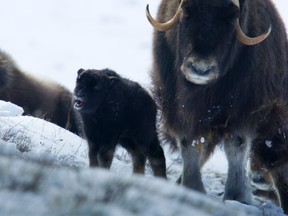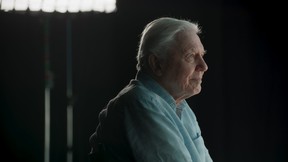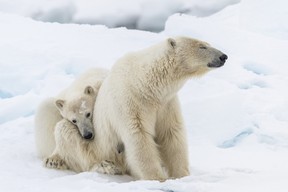6-part documentary series focusing on how climate change is affecting the cryosphere.

Article content
David Attenborough would like you to know the cold, hard facts about the cold, harsh regions of the world, from mountain peaks to frozen deserts, snowy forests, and bone-chilling oceans.
Announcement 2
Article content
In 2011, the British naturalist and historian narrated the BBC’s seven-part documentary Frozen Planet, which focused on animals and the environment in the Arctic and Antarctic. He went on to pick up four Emmy Awards along the way.
Article content
Now, at 96, he’s back with Frozen Planet II. The documentary, which takes place in six episodes, expands its scope to include the entire cryosphere and examines how climate change affects it. The series premieres on Sunday on BBC Earth, which is also available via Amazon Prime Video. Frozen Planet II episodes will be simulcast on that platform.
“We felt a universal film needed to be made that was contemporary, fresh and had real relevance, tied to raising audience awareness of climate change,” says executive producer Mark Brownlow.
Announcement 3
Article content
“If we could make a series that would first and foremost celebrate the wonder and magic of our frozen worlds, we might also surprise you with the variety and heroic stories of survival in all these different frozen areas at a time when they are changing. quickly.”

Brownlow says the production team used time-lapse cameras and satellites to help show the scale and speed of climate change. Much closer, ultra-high-definition cameras captured the animals in survival mode: At a preview performance in the UK in August, audience members gasped when an eagle dragged a baby chamois down the hillside. a mountain and threw her to her death.
He was not the only fatality. In the arctic tundra, grizzly bears hunted newborn musk oxen calves. And on the Antarctic Peninsula, a team of killer whales targeted a seal on an ice floe with ruthless precision.
Announcement 4
Article content
“It could be very difficult to watch some of these predation sequences,” co-producer Alex Lanchester told Britain’s The Telegraph. “You’re there to film what happens, but that doesn’t mean it doesn’t affect you. It can be really horrifying to see some of the things that happen.”
The project involved 102 shoots around the world and took four and a half years to complete. The first episode introduces the various regions and explains what makes them unique.
Subsequent installments tackle the Arctic Ocean, Antarctica, the mountains, and the northern lands. The cameras travel to countries such as Mongolia, Russia, Norway, Kenya, Japan, Peru, New Zealand and Italy. Canada is also a highlight: check out scenes in places like Alberta, Nunavut, and the Northwest Territories.
Announcement 5
Article content

“The last episode, Our Frozen Planet, is effectively a science movie,” says co-producer Elizabeth White. “In this episode, all the stories are told through scientists or indigenous people who live or work in these cold regions.”
It all makes for a compelling portrait of climate change and the severity of its consequences. A recent report published by the Global Carbon Project (GCP) found that CO2 emissions are rising so rapidly that there is now a 50 per cent chance that the world will soon cross a crucial climate change threshold.
Still, Frozen Planet II is optimistic.
“I think anyone who knows anything about these regions will probably say that the situation is bleak in many ways. But what we’ve tried to establish from the beginning is that these people are striving to change things before it’s too late,” says White.
“And in the final messages of this series we are trying to inject a sense of hope. We have scientists talking about the fact that we have at our fingertips the technology to use renewable energy, to transform society, and that the will exists. The will is greater now than ever.”
Frozen Planet II makes its Canadian premiere on Sunday, November 13 on BBC Earth. BBC Earth is also available on Prime Video, with Frozen Planet II simulcasting on the platform.
